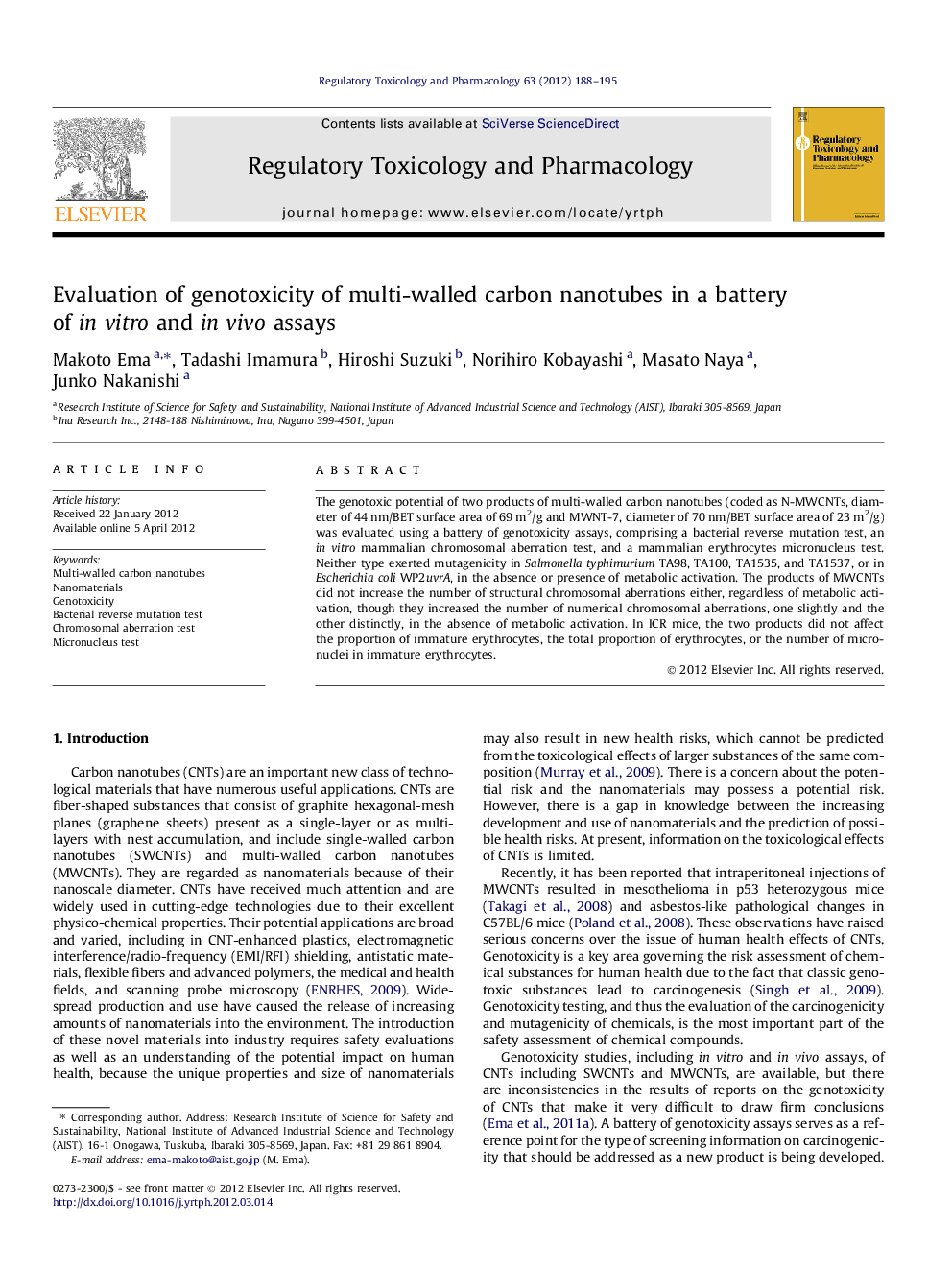| Article ID | Journal | Published Year | Pages | File Type |
|---|---|---|---|---|
| 5857395 | Regulatory Toxicology and Pharmacology | 2012 | 8 Pages |
The genotoxic potential of two products of multi-walled carbon nanotubes (coded as N-MWCNTs, diameter of 44Â nm/BET surface area of 69Â m2/g and MWNT-7, diameter of 70Â nm/BET surface area of 23Â m2/g) was evaluated using a battery of genotoxicity assays, comprising a bacterial reverse mutation test, an in vitro mammalian chromosomal aberration test, and a mammalian erythrocytes micronucleus test. Neither type exerted mutagenicity in Salmonella typhimurium TA98, TA100, TA1535, and TA1537, or in Escherichia coli WP2uvrA, in the absence or presence of metabolic activation. The products of MWCNTs did not increase the number of structural chromosomal aberrations either, regardless of metabolic activation, though they increased the number of numerical chromosomal aberrations, one slightly and the other distinctly, in the absence of metabolic activation. In ICR mice, the two products did not affect the proportion of immature erythrocytes, the total proportion of erythrocytes, or the number of micronuclei in immature erythrocytes.
⺠A key area governing the risk assessment of chemicals is genotoxicity. ⺠Multi-walled carbon nanotubes (MWCNTs) exerted no mutagenicity in a bacterial reverse mutation test. ⺠The number of numerical chromosomal aberrations was increased by MWCNTs in in vitro chromosomal aberration test. ⺠The in vivo mammalian erythrocytes micronucleus test revealed the negative outcome for MWCNTs. ⺠These findings showed that MWCNTs appear not to pose a genotoxic risk to human health.
